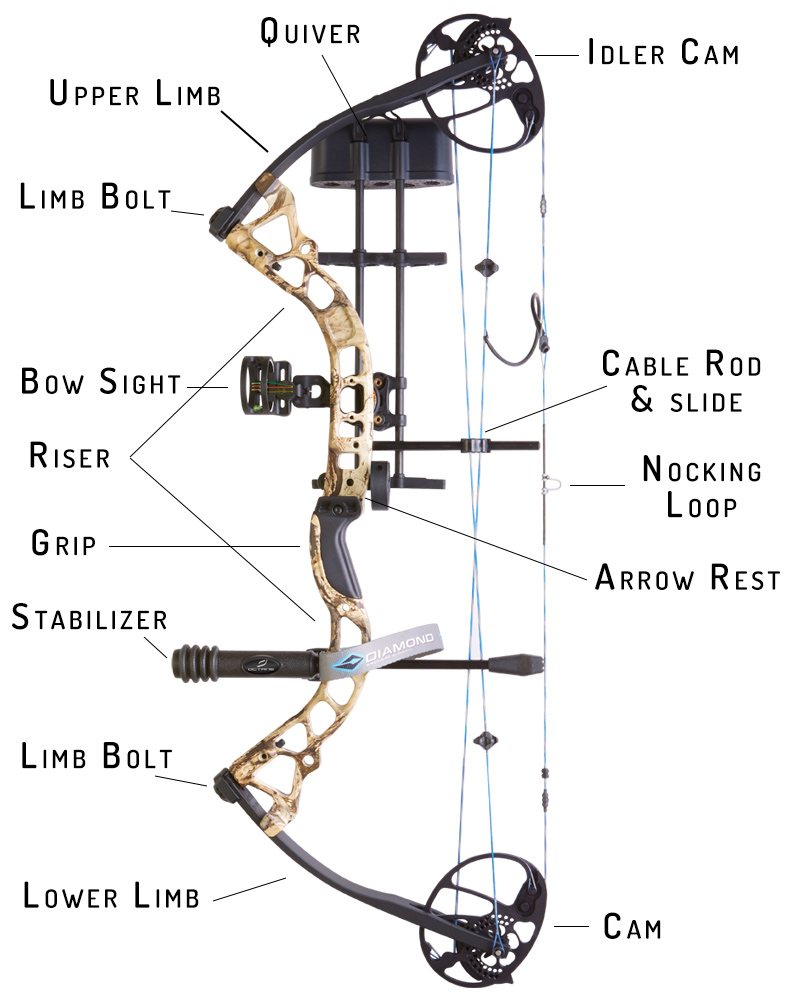How do compound bows work?
A compound bow is probably the most complicated type of bow. All those mechanical parts can be confusing.
While archers love the compound bow because of its accuracy and power, not all of them understand how it works.
What happens from when you start drawing the bowstring to when the arrow is released? It doesn’t help that most of the explanations on the internet are complex.
So, in this article we’ll explain – in simple terms – the mechanism of a compound bow.
YOU MAY ALSO LIKE: What Are The Best Compound Bow Brands of 2024?
What are the Parts of a Compound Bow
It will be easier for you to understand how a compound bow works when you are familiar with its parts.

How Does a Compound Bow Work?
Now to answer your question.
All bows, including a compound bow, follow one principle: the archer draws the bowstring back and the limbs flex, storing energy. When the string is released, this energy is transferred to the arrow, launching it.
The amount of energy stored in the limbs depends on how far back you draw the string. The farther you draw the bow, the more energy will be stored. Powerful bows require more effort for you to get the string to your anchor point – that is, they have a higher draw weight.
The draw weight of a bow is the effort required to draw the string fully and it determines the launching force. It is usually measured in pounds. Powerful bows have a higher draw weight. Still following?
When you have the bow string of a traditional bow or a recurve bow drawn all the way, your arm bears the full force. Yes, it can be tiring, especially if the bow has a high draw weight like 70 pounds. This is where compound bows are different.
Don’t zone out. This is where it gets interesting.
The compound bow uses a cam pulley system to make things easier for you. You can see the cams in the diagram above.
These cams create something known as a let-off. It is essentially defined as the percentage of the force that you won’t have to bear.
As you start drawing a compound bow, you’ll use more power. But as you approach the back wall, a compound bow gives you a mechanical advantage and the load reduces significantly.
RELATED: How Powerful Is A Compound Bow?
An Example
Here is a real example to help you understand.
Suppose a compound bow has a peak draw weight of 70 pounds and a let-off of 80% (it’s usually indicated by the manufacturer).
When you start to draw the string, it feels hard because the draw force is heavy. This load reduces as you draw back further. By the time your arm gets to the back wall, you will only be bearing 20% (100 – 80) of the draw weight. That is only 14 pounds.
Amazing, right? But, how does the compound bow do that?
You’ll notice that the cams are not perfectly round. As you draw the string, they rotate and, in the process, take a portion of the burden away from your arms.
With your load lightened, you can have a steady aim and take your time. It’s that simple.
Summary
ALSO READ: Genesis Original Bow Review – Best Youth Target Bow
So, how does a compound bow work?
- You draw the bowstring causing energy to be stored in the limbs.
- During the drawing process, cams rotate and take up some of the draw weight from your arms, creating a let-off.
- At full draw, you only bear a percentage of the bow’s draw force.
- This lets you take your time while aiming.
- When you release the string, the energy is transferred to the arrow and it is launched.
